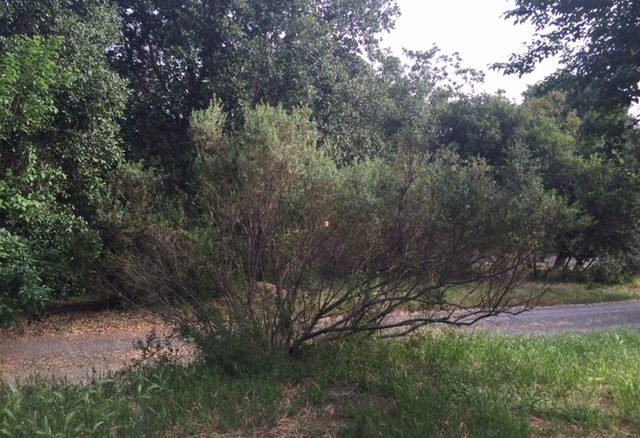Redefining Weeds!
We are not complaining, believe me! April’s cherished 0.7 inch of rain was more than welcome! However, it did produce more grass and weeds, and again, we are at it: pulling thick-leafed “weeds” from the rose geranium, the bindweed from the lavender, the grasses from between the new plantings we have set out of helichrysum.
But it is always this way in March, April, and May. We have three weeding cycles before summer fallowness sets in, and it always feels like the weeds are getting ahead of us! Mulching helps, but is not the only answer.
So, in part, we redefine weeds—they are part of our biodiversity. It is not only a rationalization, but true, to a point. There are some plants that are invasive and need to go, like Scotch broom and English ivy. They out-compete what should be growing here. But there are others that live alongside the rest: coyote bush, sticky monkey flower, yarrow. These plants provide pollen for native pollinators and cover for shelter. Watching and listening helps us select what goes and what stays. Then we are in a kind of dialogue, and our focus changes from dominating our landscape to consciously paying attention to what it is expressing and only then, actively intervening. Is this function what Rudolf Steiner called the quintessential, the consciousness brought to the mix? Carl Jung put it another way: “Nature must not win the game, but she cannot lose.”
Some years ago we had a native plant person come to our ranch and identify what was native and what wasn’t. This was critically important to us in learning attend to the natural landscape. Native plant societies have these experts, and we would highly recommend you find them as you plant your own garden and yard. Retraining ourselves in listening to the voice of the land upon which we reside may become critically important for those of us living in drought areas.
